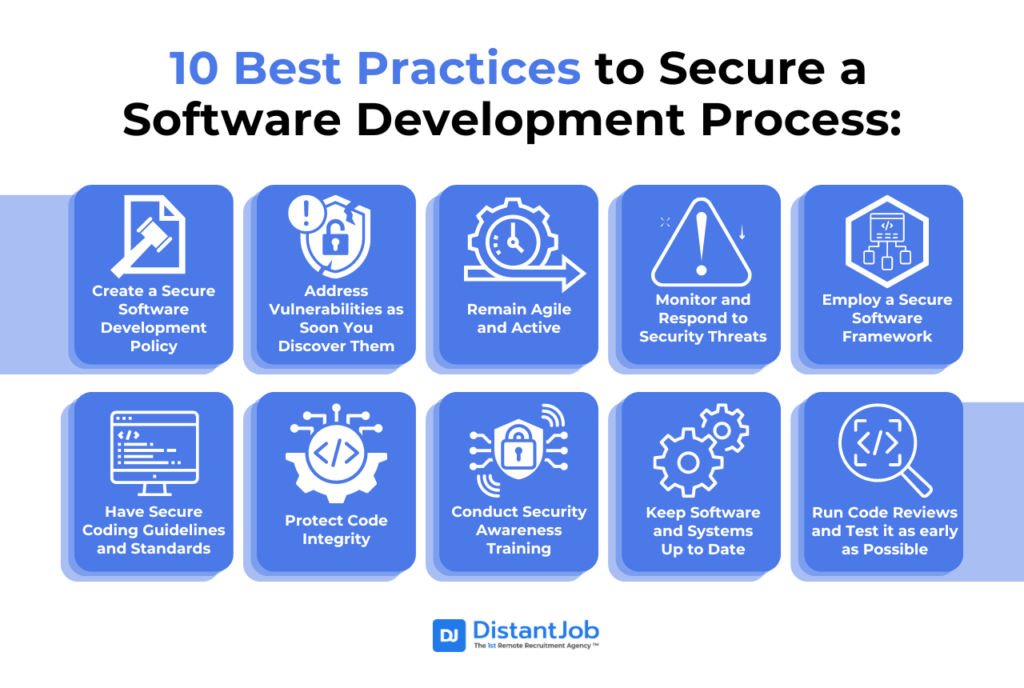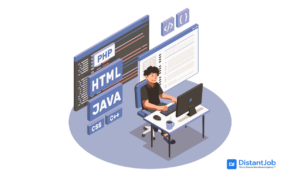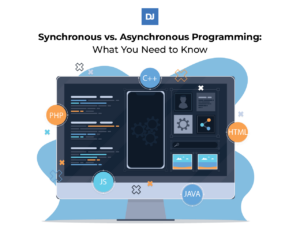Throughout the development, deployment, and maintenance phases, any software project is susceptible to attacks and security risks. Hackers can infiltrate and exploit weaknesses at any stage, making it essential for developers to incorporate best practices that address common threats and flaws.
Secure software development is a comprehensive approach to building software applications where security is incorporated into every phase of the Software Development Lifecycle (SDLC). It’s an approach that ensures coding standards, principles, and other security considerations are ingrained in the application’s design from the start to minimize threats.
Read on this blog to learn more about secure software development best practices that‘ll guarantee your software product is reliable and trustworthy.
Why Prioritize Secure Software Development?
Secure software development aims to reduce risks by identifying threats early on and following best practices to mitigate them. The goal is more than just ensuring that the software architecture is functional, but is also robust against potential threats.
A report by CSIQ revealed that the total cost of unsuccessful software development projects in the US rose to an estimated $260B in 2020. The total cost of operational failures alone due to poor-quality software was estimated to be more than $1 trillion.
These statistics reveal why performing a risk assessment as part of the secure software development best practices can be vital to point out potential problems that may occur within a software project.
A risk assessment will give you a better sense of yoursoftware’s quality, which makes it easier to map out an action plan and prevent future failures.
Secure software development best practices help project managers and the development team produce sustainable software. These practices may target any area in your software development process, such as a programming language, framework, or architecture.
While some practices may not apply to all software projects, they still can help propel your software development project to success by facilitating the following:
Easy Understanding of the Code
Many software development teams spend too much time trying to understand and rework source code before embarking on the actual development process.
However, adopting secure software development best practices such as enforcing a secure coding standard can help development teams streamline this initial phase, reduce technical debt, and deliver more secure software faster.
Adopting a secure coding standard and enforcing it consistently across the team ensures consistency in the codebase. It can also help developers write an easy-to-read code and future proof it to minimize vulnerabilities.
Cost Reduction
Deploying secure software development best practices makes keeping your software in good shape over time more manageable. Practices such as implementing Continuous Integration and Continuous Deployment (CI/CD) pipelines not only streamlines the development process but also enhances the overall quality and security of the software
They’re easy principles that, if followed, will result in fewer or no issues with your software later in the SLDC. Ultimately, there’s a considerable cost reduction in the entire management of your software development. They also help cut on costs by ensuring you identify and fix vulnerabilities before the production phase.
Better Team Output
Secure software best practices can improve your development team’s overall output. They are especially crucial during code reviews, where code authors and reviewers may be keen on taking opposite approaches.
If you manage cross-functional teams, investing time into sharing secure software development best practices makes it easier to handle code reviews and deliver value to the clients and other stakeholders.
Risk Mitigation
Software development teams always aim to avoid risks and reduce their impact on the development process. For example, they work with QA to prevent bugs in their software so that customers and users are satisfied with the end product.
They also want to avoid risks associated with cyber security in software development by deploying security tools and following best security practices. Some of these risks arise if developers don’t heed secure software development practices or their incorrect applications.
How Do You Secure a Software Development Process? 10 Best Practices

To secure your software development process, you can start by creating a robust software development policy that includes secure coding practices, input validation, and secure data storage. Integrate security measures throughout the software development life cycle (SDLC), ensuring continuous monitoring and vulnerability assessment.
Additionally, employ a secure software framework, conduct regular security awareness training for your team, and maintain up-to-date software and systems. By following these best practices, you mitigate risks and protect your software from potential security threats.
Here’s a general look at the ten best practices that you can implement in your software development processes:
1. Create a Secure Software Development Policy
Start by designing a policy for the processes and technology required to perform secure software development. The policy outlines the key guidelines for approaching and implementing security in each phase of the SDLC. It also defines each individual’s role, the processes to use, and the best software development tools that minimize risks in software production.
2. Address Vulnerabilities as Soon You Discover Them
Vulnerabilities are just part of the way software development works. The truth is, incidents happen—not if they do but when, so you must have a response team with a plan and a process to respond in real-time. The quicker you detect and remediate vulnerabilities, the better, as it’ll reduce this window of opportunity to exploit.
3. Remain Agile and Active
The best software development teams learn from vulnerabilities — what is causing them, why they are recurring, how to identify the vulnerability patterns and update SDLC with this new knowledge. As a software development team, you gain more by remaining agile and learning the best possible ways to secure your software in case of a threat re-occurrence.
4. Monitor and Respond to Security Threats
Monitor and report security threats as they arise during the SDLC and act on them accordingly. Start with implementing cross-functional teams where one group monitors and assesses threats, reporting back to the other groups on what to do in the event of an issue. One of the best ways to monitor threats is to conduct unit testing for each area of concern in the software development process.
5. Employ a Secure Software Framework
A secure software framework refers to a way of designing and developing a software product with security features in mind. The most common framework is NITS’s Secure Software Development Framework (SSDF) which outlines best practices for integrating into any SDLC model. Implementing these practices will help you reduce flaws in released software and lessen the potential impact of exploiting unnoticed vulnerabilities.
6. Have Secure Coding Guidelines and Standards
Setting coding guidelines and standards is a vital step and one of the best practices for project managers who want to create a secure software development environment. They’re mostly specific to the project requirements but play an essential role in securing data during SDLC. In addition, secure coding standards can also enforce software design principles to minimize vulnerabilities prior to any software products or applications going live.
7. Protect Code Integrity
Code integrity means that the software code is correct, complete and matched. Protecting code integrity in a software project impacts how users trust your system. A good place to start is to keep your code in secure software repositories with limited access to trusted development team members. You can top this up by building in code reviews, testing and documentation to ensure even higher levels of integrity.
8. Conduct Security Awareness Training
Keep your software development team in the loop on handling software security challenges that arise during the development process. For example, cyber threats are a huge concern in software development. If left unchecked, they can result in unauthorized access to sensitive user data. Creating security awareness, especially of cybersecurity in software development, can help your team integrate protective measures that safeguard the software and its users.
9. Keep Software and Systems Up to Date
Keeping software secure is a collaborative effort. Making regular security updates to keep your application secure throughout development is a baseline requirement for SSD. These will patch open vulnerabilities and remove bugs. Updates may also introduce better features and remove outdated ones.
10. Run Code Reviews and Test it as early as Possible
Create a team mindset of examining and testing every single piece of code as quickly as possible rather than waiting until the end of SDLC to start testing only a few pieces. The more code defects and vulnerabilities caught earlier in the SDLC means less or no developer pain later on.
Conclusion
Because of high-level data breaches and how operational security has been abused, more developers are realizing the importance of secure software development and following its best practices.
However, secure software development is meaningless if you don’t have the right software development team. Finding the best talent with the right skills can be a massive hurdle in implementing these practices.
DistantJob prides itself on being one of the best places to find high-quality software developers. Tell us the skills and experience you’re looking for—our team of global headhunters and recruiters will take over and find the right candidate.





